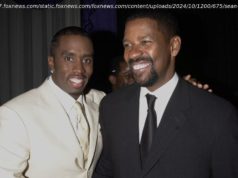Ornaments have played their part in advancing the plot of numerous films. Mani Ratnam’s period drama is only the latest such example.
In Mani Ratnam’s recently released Ponnyin Selvan: I, the warrior Vandiyathevan gains entry into the heavily guarded abode of the princess Nandini by flashing a signet ring she had given him during a previous encounter. The passing of the ring from Nandini’s soft hand to Vandiyathevan’s battle-scarred palm is depicted in a close-up – a fleeting moment of sensuality that won’t be missed by the alert viewer.
Jewellery has its pride of place in Ratnam’s film, adapted from Tamil writer Kalki Krishnamurthy’s popular novel and set in the Chola kingdom in the 10th century. The principal female characters – Nandini, the Chola princess Kundavai, Kundavai’s friend Vanathi – are bedecked in dazzling ornaments that were created for the film by Hyderabad jeweller Kishandas and Co.
In another sequence, the scheming Nandini, who is manipulating the affections of her much older husband, asserts her hold over him when she asks him to unclasp her choker. Although the scene’s erotic possibilities are glossed over in Ratnam’s family-friendly film, we know exactly what is being implied here.
The presence of jewellery – or its absence, as the case may be – has inspired plot points in many movies through the decades. Film song writers are fond of comparing the beauty of women (and men) to diamonds, pearls and other geegaws.
We’ve lost count of the number of films in which a woman hands over her ornaments to her husband and says, sell these and build your empire. The marker of a hero’s turn of fortunes is the chunky pair of bangles or diamond-laden necklace that he gifts his mother or lover.
Items of jewellery are often used to validate identity, as established in the Ramayana (an abducted Sita leaves a bread crumb tail in the form of her ornaments). A prosaic variation of this idea can be found in the films in which rings or pendants help parents recognise long-lost children. In this aspect of dramaturgy, filmmakers are only following in the footsteps of writers and myth-makers, as Wendy Doniger wrote in The Ring of Truth.
Doniger’s scholarly account focuses on the starring role of the ring in myths, folklore and fiction around the world. From Kalidasa to William Shakespeare and Hinduism to Judaism, “the circular form of rings and bracelets, miming the circle of eternity, persists in the face of human ephemera: lovers come and go, marriages end, Russian princes are no more, but rings remain”, Doniger writes.
Doniger devotes several chapters to the sexual resonances of jewellery. In Girish Karnad’s Utsav (1984), the courtesan Vasantasena enchants the impecunious Charudutt. The sequence in which Charudutt helps Vasantasena take off her ornaments is one of the most erotic passages in Indian cinema.
Later, Vasantsena lovingly adorns Charudutt’s wife Aditi with her trinkets, sealing their friendship and effectively shoving Charudutt out of the picture.
There’s clearly no conversation starter like jewellery. In Mani Ratnam’s Thalapathi (1991), a pair of gold bangles bridges the gap between the bharatanatyam dancer Subbalakshmi and the gangster Surya.
Домой
United States
USA — Cinema ‘Ponniyin Selvan I’ and beyond: When jewellery plays a starring role in...






